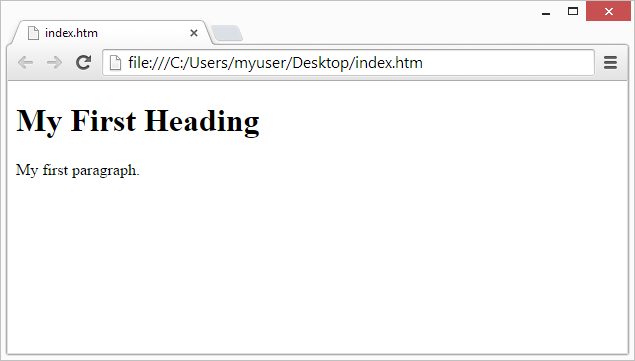

HTML is a markup language for describing web documents (web pages).
Using this description, a web browser can display a document with a heading and a paragraph.
HTML tags are keywords (tag names) surrounded by angle brackets:
 | The start tag is often called the opening tag. The end tag is often called the closing tag. |
|---|
The purpose of a web browser (Chrome, IE, Firefox, Safari) is to read HTML documents and display them.
The browser does not display the HTML tags, but uses them to determine how to display the document:

Below is a visualization of an HTML page structure:
 | Only the <body> area (the white area) is displayed by the browser. |
|---|
The <!DOCTYPE> declaration helps the browser to display a web page correctly.
There are different document types on the web.
To display a document correctly, the browser must know both type and version.
The doctype declaration is not case sensitive. All cases are acceptable:
 | All tutorials and examples at W3Schools use HTML5. |
|---|
Since the early days of the web, there have been many versions of HTML:
| Version | Year |
|---|---|
| HTML | 1991 |
| HTML 2.0 | 1995 |
| HTML 3.2 | 1997 |
| HTML 4.01 | 1999 |
| XHTML | 2000 |
| HTML5 | 2014 |